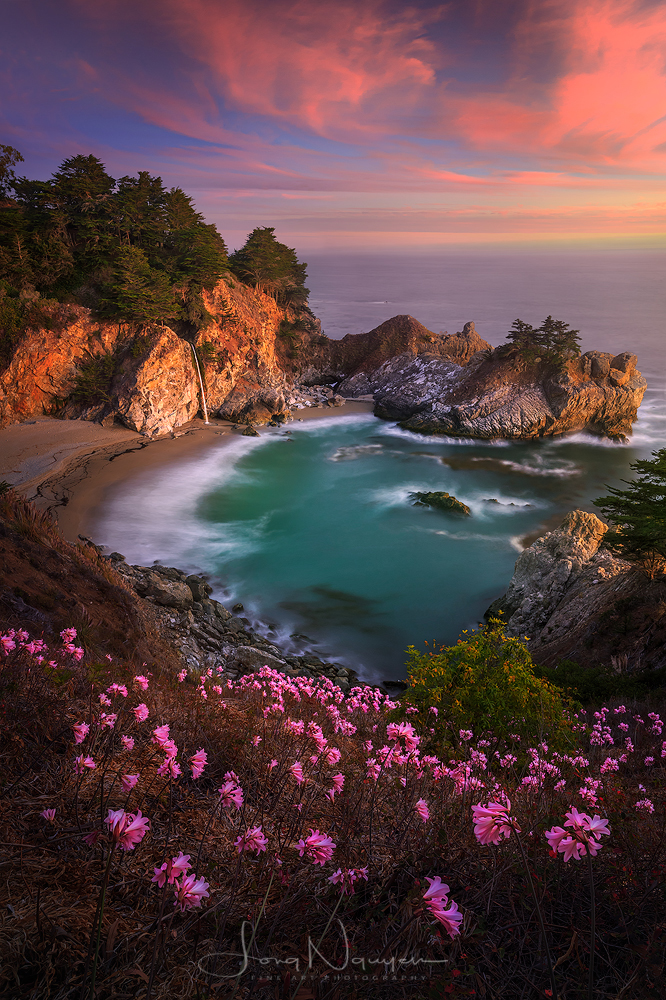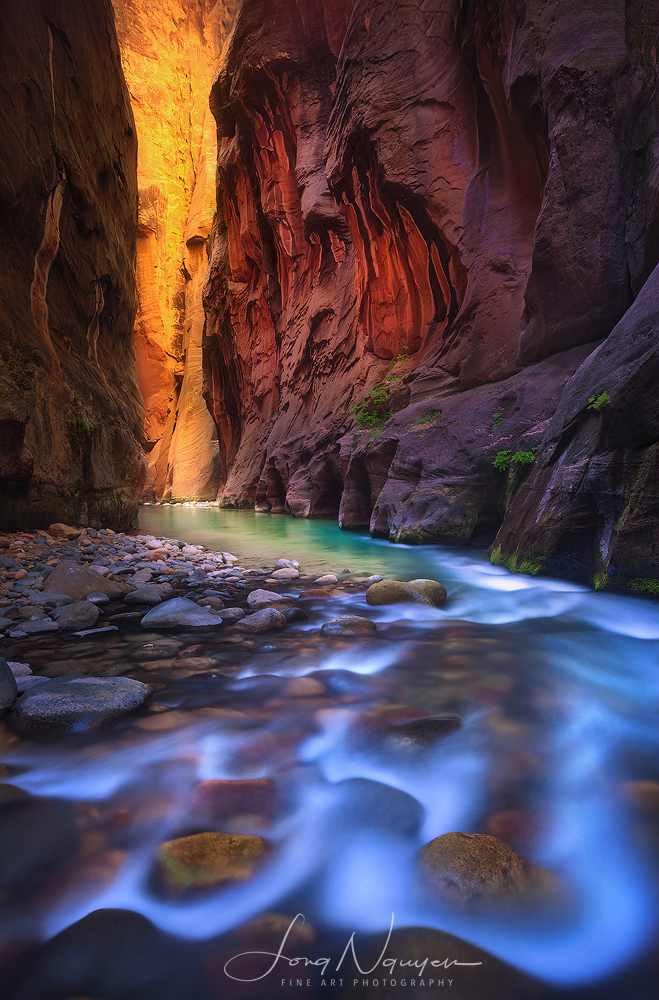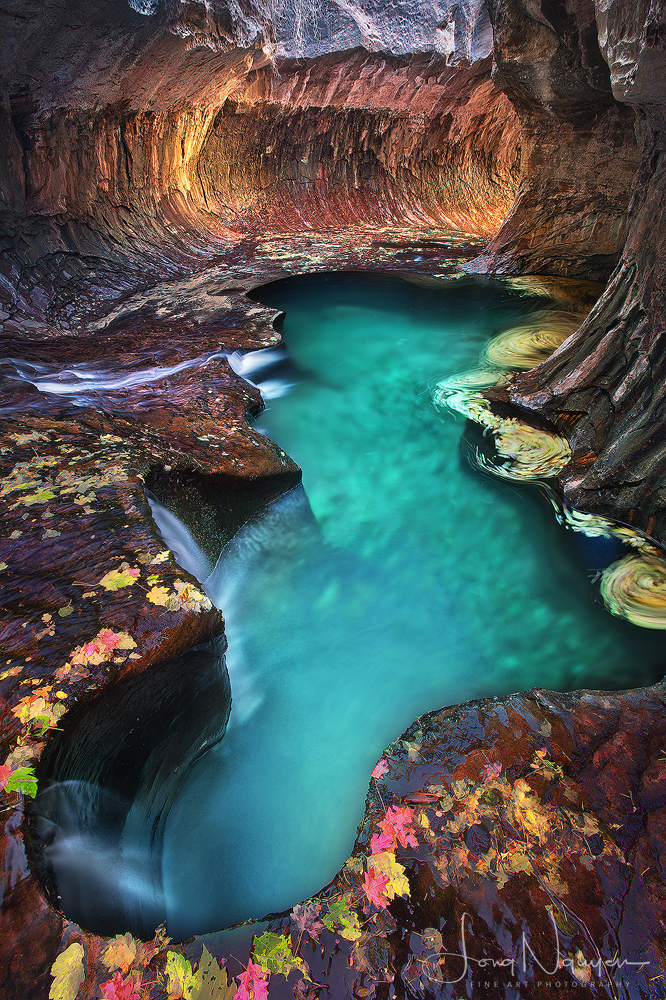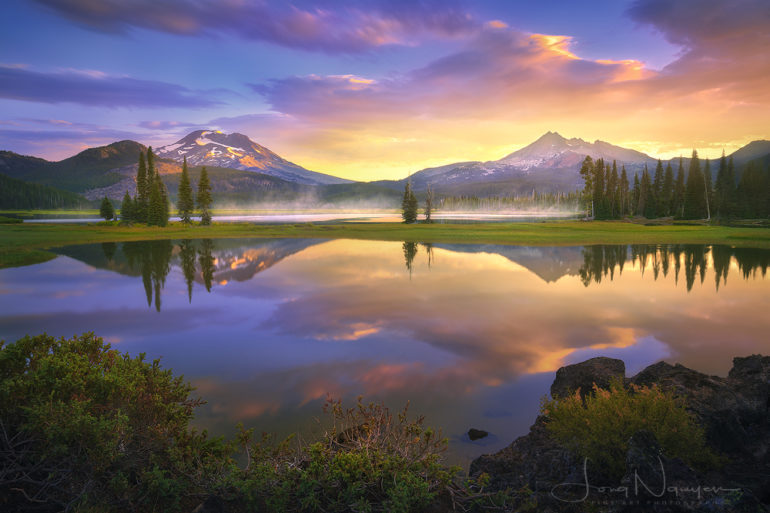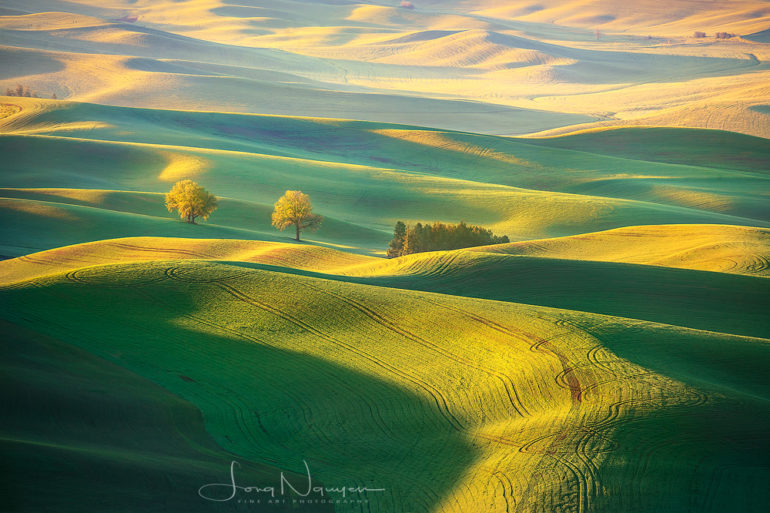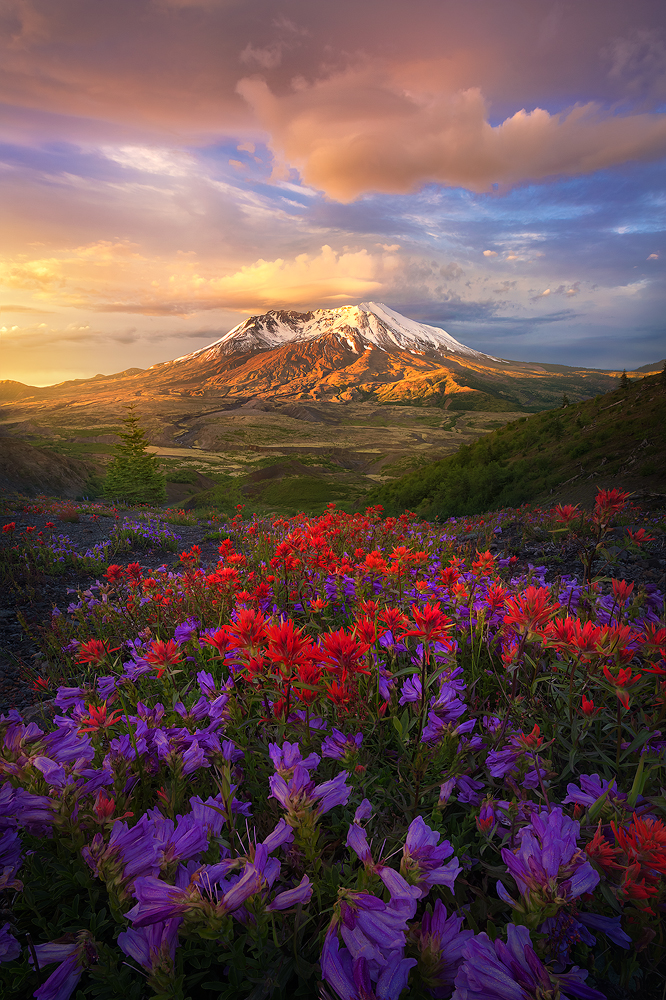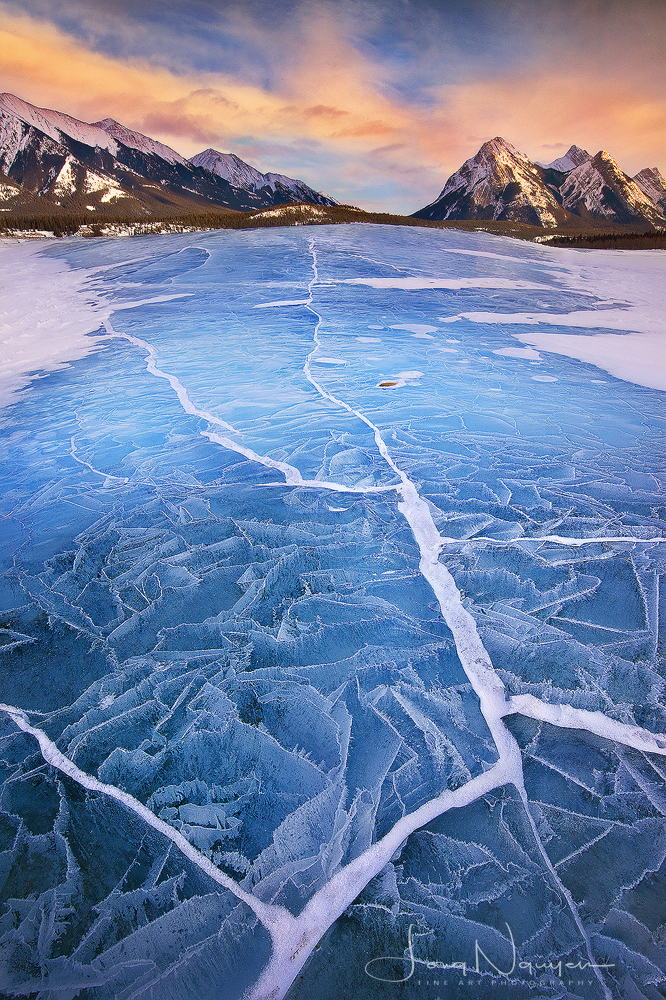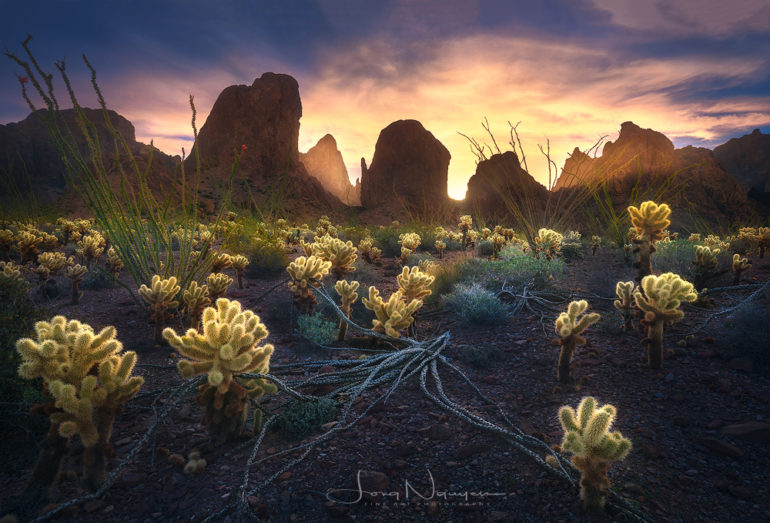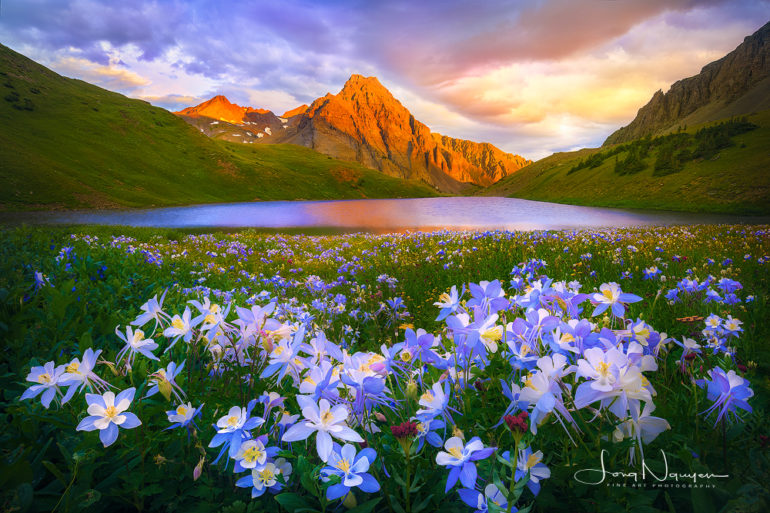Last Updated on 05/10/2018 by Mark Beckenbach
Here is a landscape photographer with a passion for creating images that make your jaw drop
Photographer Long Nguyen is a financial accountant during the day who turns into a sun seeking photographer at sunrise and sunset – or at least that’s what he says about himself. “Currently I live in Seattle, Washington. That provides me opportunities to explore numerous areas of this ‘evergreen state’ in addition to other beautiful places around the world,” he continues. Long is a previous winner of Outdoor Photographer’s American Landscape photography contest, and is always amazed at what nature gives him. Long says that he’s much more of a creative photographer than a technical one.
Further, he’s all about being versatile. Sometimes his favorite images aren’t pre-planned.
Phoblographer: How did you get into photography? What sparked the passion?
Long: I have always had a keen interest in painting, traveling, and seeing nature in their purest forms. However, photography didn’t take off until 2009 with the purchase of my first digital SLR. I’ve became inspired by famous professional photographers: Marc Adamus, Art Wofle, Guy Tal and many other well-known photographers all over the world. They motivated me to get outside, ventured into the wilderness and photograph the beauty of the natural world.
Since I work for an airline company, I’m humbled to have multiple opportunities to travel to many beautiful places. It helped me to be at “the right place and at the right moment.” I started to frequently bring my camera whenever I traveled. My camera is an extension of me to help capture the moments within my own visions. Photography has quickly blossomed from a hobby into a main passion of mine. The more I get involved in landscape photography, the more I fall in love with nature and fine-art photography as a medium where I’m able to express my unique interpretation of that beauty to others.
Phoblographer: What makes you want to get into landscape photography?
Long: I’m fortunate to be living in the Pacific Northwest with beautiful locations within a few hours’ reach. You have beautiful waterfalls at the Columbia River Gorge, alpine sceneries with Mount Rainier, Mount Hood, and the dramatic coastline of Washington and Oregon. Landscape photography gives me a chance to be closer to nature. I love the diversity of American landscapes from Southwest canyons to California deserts to pristine alpine lakes & wildflowers, the ocean, waterfalls, etc. The more I traveled the more I learned about geography, weather forecast prediction, types of flowers, and ocean tidal patterns. Having to push myself and to overcome challenges both physical and mental (fear). For instance, hiking alone into remote areas in extreme conditions while carrying a heavy backpack of equipment. Even though it was not always comfortable, I soon learned to overcome.
Furthermore, I’m always amazed at what nature brings. Having opportunities to witness the first light over a mountain, the smell of an alpine wildflower, or the last light over the ocean make me forget all of the hardships to get to that place. With that I get to witness the rare moments like lava flowing into oceans, aurora borealis (northern lights) and basically it’s me and nature making lifetime memories together.
Landscape photography brings me so many great, memorable experiences in the wilderness. But most importantly, it makes me appreciate all Mother Nature offers in life. We’re living in a fragile world where anything can harm it in time. The things I see at the places I went might not be there the next time I decide to go back. During my trip to Alaska I saw the dramatic reduction of ice glaciers, other places like trees at the Columbia River Gorge destroyed due to a fire accident, and of course the sea stacks in Oregon and Washington coast that are collapsed.
Overall, my goal as a landscape photographer is to showcase images of the natural world in a unique perspective that viewers might not have seen before through careful composition, attention to detail, and the creative use of beautiful light. With these images I hope to tell a visual story and let viewers’ minds journey through the world of natural beauties that we must protect.
Phoblographer: How did you hone this creative vision over your years of shooting?
Long: A desire to get better pictures became a thrill to me. Over the years, I have spent a countless number of times focusing on improving my photography and processing skills. I haven’t had any sort of formal training, classes, or workshops for photography. To make up for this, I learned through online tutorials and read several photography books that I bought. I also read books and viewed art galleries to study paintings.
The most noticeable improvement to my photography over the years is my composition and post processing. I have learned a lot and am excited that learning is an ongoing process. I’m constantly striving to improve my compositions and post processing through self-criticism and through learning other photographers’ works. My goal to provide viewers compelling compositions and new perspective of a scene motivate me: I don’t mind going back to the same place many times to capture the composition I’ve envisioned. If I shoot well-photographed scenes, I try to distinguish myself through capturing different, unique conditions and applying my own artistic take through processing. I also try to convey emotion in a scene to the viewers to make them feel it by using various shutter speeds, filters and post processing.
Phoblographer: Talk to us about the gear you use. How instrumental is it in the creative process?
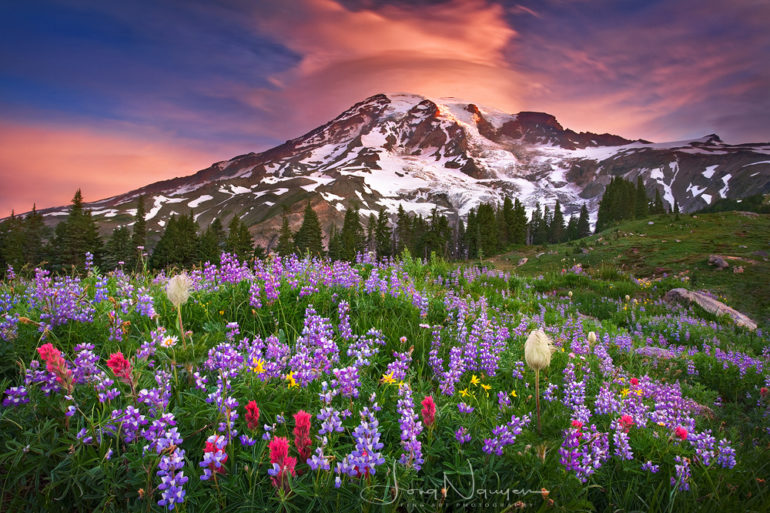
Long: I have shot the majority of my images with Canon 5D Mark iii camera and two L Canon lens 16-35mm f2.8 and 70-200mm f2.8. I also have a Singh-Ray polarizer, Grad Neutral Density filters, 6 and 10 stop Neutral Density filters, and a Really Right Stuff ball head and tripod.
Being always drawn to grand and dramatic landscapes. I often use my 16-35mm ultra-wide angle lens for most of my grand sceneries. It helps provide the three-dimensional perspective and emphasize a unique depth of field. I recently purchased an 11-24mm a few months ago. This massive lens has proven to be such a game-changer for me that I have reshaped my compositions and the way I look at a scene. The expansive wide-angle range of 11-24mm allows to include more sky, to get closer to the foreground, and to create a greater sense of depth and more dramatic sceneries. As for intimate sceneries, I mostly use a tele-lens 70-200mm to photograph. I often use 6 stop ND filters for cloud or fog movements and water action to create moods for the sceneries.
Phoblographer: Do you feel like you’re more technical or creative? Why?
Long: I’m definitely more creative than technical. In my opinion, cameras are just tools. It is what I see that creates the final image.
I tend to spend most of my time in different locations to explore new compositions and adapt to new challenges. Before I visit a new location I normally do a lot of online research too. I then will try to avoid popular compositions and try my best to find different perspectives. It’s not necessary to be stand-out or amazing. Sometimes I use a wider lens, switch to different angles, or select different, unique foreground subjects to shoot.
Even in touristy areas which have been shot hundreds of times before, I try to find an aspect of that area that people haven’t seen much. The picture of McWay Falls in Big Sur is a good example. I am mesmerized by that place for its gorgeous waterfall drops that come from the granite cliffs directly into the ocean. However, it’s constantly crowded with tourists who’ve taken many pictures from this area before. One time I visited there with my family and noticed beautiful wildflowers blooming along the hills nearby. I was so glad that I found this because they are great foreground subjects and I knew that I would get fresh compositions. I skipped family dinner that night and stayed there late in order to get the shot.
My favorite pictures that I’ve taken aren’t always the ones I plan or pre-visualize. An example of this is when I took one of my all time favorite images, “Lost”, when I got lost while looking for the road to get back home. Creativity requires you to keep an open mind and to be flexible regarding all the possibilities that could occur. As for landscape photography, most of the time you should go with the current lighting and weather conditions and open your eyes to observe the surroundings to find interesting subjects.
Phoblographer: What’s influenced you in the way that you create, shoot and edit your photos?
Long: I’m really into bold, dramatic, and grand landscapes. I prefer to go shoot in unusual or stormy weather. This is when you can find surreal clouds and dramatic lights. Seasonal transitions are also my favorite time to go shoot since you can find great subjects and conditions. My favorite things to photograph are the colors of nature. These include the multi-colored wildflowers, the turquoise alpine lake, the orange red of canyons, stormy, colorful clouds, etc. I usually use filters and long exposures to enhance these rich colors at each scene. The colors with warm or cool tones helps me to convey spirit and the feeling of the scene to my viewers.
Post processing has been always a controversial topic in landscape photography. To me, I really enjoy spending time in the “digital darkroom” almost as much as I do shooting because post processing allows me to produce each image according to my personal taste and artistic vision. I have lately been using various blending image techniques in my work. These new techniques overcome the limitations of current photographic equipment and helps to infuse the photograph with creative subjectivity. These include focus stacking, exposure blending and focal length blending.
Phoblographer: When you go about snapping a frame, what goes through your head?
Long: Pre-visualization and planning plays a key part to my photography. I spend a large amount of time beforehand focusing on how I can capture the images to convey certain moods and emotion to the viewers. Planning beforehand helps me determine what time of day to shoot and what gear I should use. Examples of my vision include: windy days for sand dunes, calm days to show reflection in lakes, medium high tides for wave actions, etc. I also have a plan B to shoot other things if the weather conditions aren’t optimal for good light. For instance, if it’s too cloudy or rainy, I will decide to shoot abstract or waterfalls.
I usually spend hours during shoots before the “golden hour” or “shooting time” to scout without my tripod. When scouting, I try to find any exciting foreground subjects and leading lines to create my compositions. I study the light to see how it impacts my images and how it changes later. I then try out different compositions carefully and then fine-tune them to see what I like most. I also pre-visualize what I will do during post-processing later so I can correct it at the scene. I normally start to shoot an hour before the golden hour for the reason that sometimes good light and conditions may happen before or after golden hour. It is not uncommon that I have two or three favorite compositions for the same spot, so I need to plan my time properly to get good shots with different compositions.
Phoblographer: Since winning the competition, what have you been working on as a landscape photographer?
Long: A project I’ve been working on since winning the competition is creating a calendar for my company. I also have been doing other personal projects, shooting locally in less well-known locations during different seasons. I enjoy showing somewhat unique aspects about the state I live in. It might take a couple years to complete but I’m really excited.
Phoblographer: When was the last time you were in a creative rut as a landscape photographer? How did you get out of it and emerge as a better creator?
Long: Four years ago, I found myself in a creative rut. That was around the time that I decided to push myself to take “epic” pictures in order to awe my viewers. I tried taking pictures similar to those of my favorite photographers. I was quickly disappointed and got frustrated about my photography. I realized that I forgot my true passion for landscape photography and why I started. My passion changed to be about what the viewers wanted to see and not about how I felt about that place so I decided to take a break from social media. It turned out to be a great break because it gave me more time to spend on travel and educating myself about the art of photography. After I stopped putting pressure on myself to create “amazing” pictures I really enjoyed my time being out in nature and allowing myself to experiment by shooting new images and using different styles. I’m now more drawn to abstract & intimate scenes. Those images might not seem attractive to many viewers but I’m happy to challenge myself by capturing unique scenes that express my own vision and creativity.
All images by Long Nguyen. You can see more from him on Instagram.


